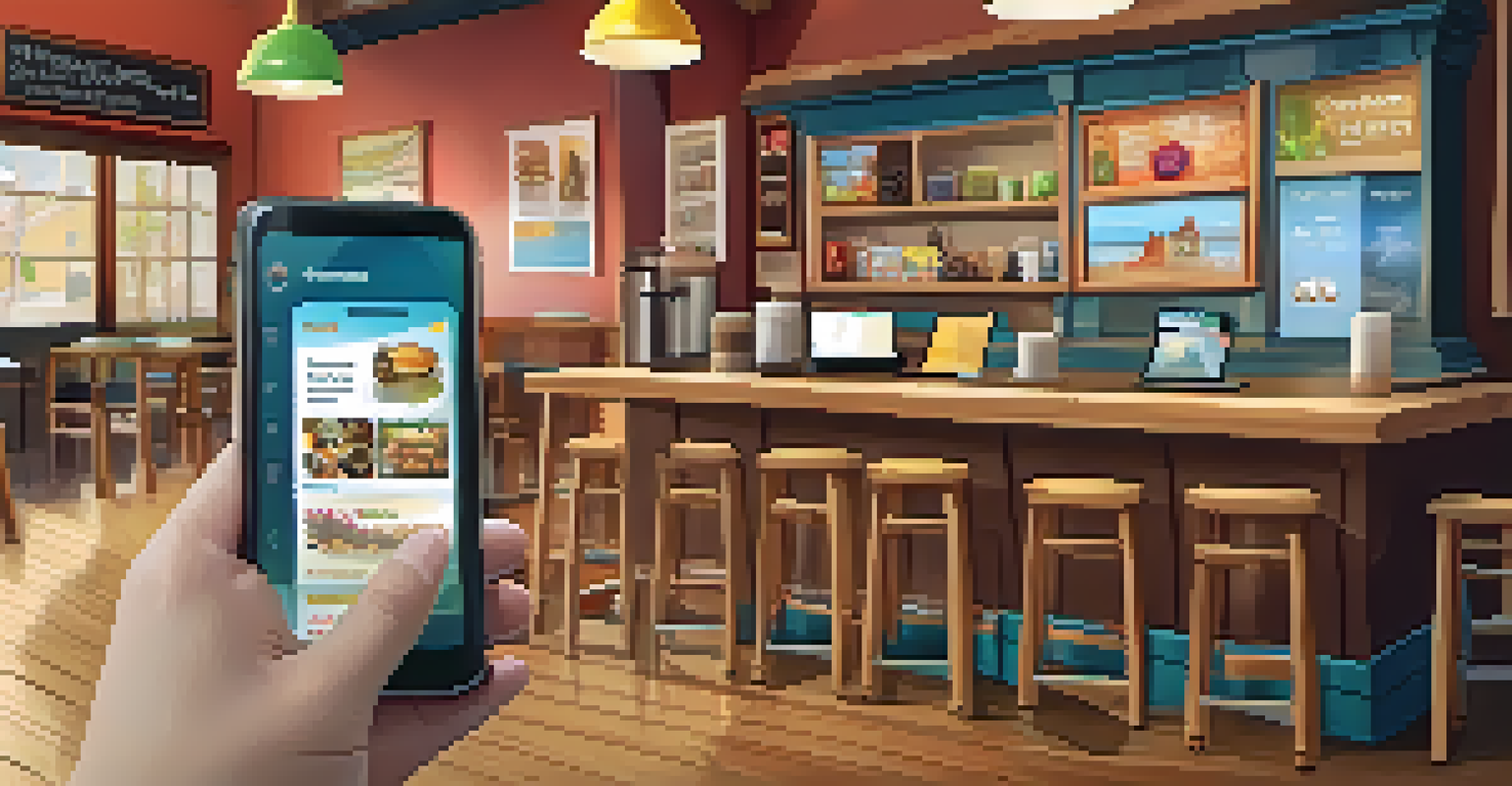Mobile Learning Platforms: Key Features for Success

User-Friendly Interface: The Foundation of Engagement
A user-friendly interface is crucial for any mobile learning platform. This means that learners should be able to navigate easily without feeling overwhelmed by complex menus or options. A clean and intuitive design encourages users to engage more with the content, making the learning experience smoother.
The best way to predict the future is to create it.
Think of it like your favorite app: you open it, and within seconds, you know exactly where to go. When a platform is designed with the learner in mind, it can significantly reduce frustration and improve retention rates. This accessibility is especially important for diverse learners, including those who may not be tech-savvy.
Incorporating familiar design elements, like icons and menus similar to popular apps, can further enhance usability. Ultimately, a user-friendly interface not only boosts engagement but also fosters a positive learning environment.
Mobile Accessibility: Learning Anytime, Anywhere
One of the standout features of mobile learning platforms is their accessibility. Learners can dive into their courses whenever they have a spare moment, whether they're commuting, waiting in line, or enjoying a coffee break. This flexibility caters to today’s busy lifestyles, making education more attainable than ever before.

Imagine being able to finish a module during your daily commute instead of waiting until you get home. This adaptability is crucial for working adults or students juggling multiple commitments. Mobile learning platforms empower users to take charge of their education, fitting it seamlessly into their daily routines.
User-Friendly Design Boosts Engagement
An intuitive interface enhances user navigation, reducing frustration and promoting a positive learning experience.
Moreover, the ability to access materials offline can further enhance this experience. By allowing learners to download content and study without an internet connection, platforms can ensure that education is truly at their fingertips, regardless of their location.
Engaging Content: Captivating Learners' Attention
Engaging content is the lifeblood of mobile learning platforms. This includes interactive elements like quizzes, videos, and gamified experiences that make learning enjoyable. When learners find the material engaging, they're more likely to stay motivated and absorb information effectively.
Education is not the filling of a pail, but the lighting of a fire.
Consider how traditional textbooks can sometimes feel dry and uninviting. In contrast, an interactive module that allows learners to participate actively can create a sense of achievement and excitement. This not only enhances learning but also fosters a deeper connection with the material.
Additionally, incorporating real-world scenarios and case studies can make content relatable. By connecting lessons to practical applications, learners can better understand the relevance of what they’re studying, ultimately leading to improved outcomes.
Personalized Learning Paths: Tailoring Education to Individuals
Personalized learning paths are a game-changer in the world of mobile education. Every learner has unique needs and preferences, and a one-size-fits-all approach often falls short. By allowing users to customize their learning journey, platforms can cater to individual strengths and weaknesses.
Imagine a student who struggles with a particular topic; a personalized learning path can provide additional resources and exercises tailored to their needs. This targeted approach not only boosts confidence but also enhances the overall learning experience. It’s like having a coach who knows exactly what you need to improve.
Mobile Learning Offers Flexibility
Accessibility allows learners to study anytime and anywhere, fitting education seamlessly into their busy lives.
Furthermore, adaptive learning technologies can analyze user performance and suggest adjustments to their learning paths. This level of personalization ensures that each learner is supported on their journey, promoting success and satisfaction.
Collaboration Tools: Fostering Community and Interaction
Collaboration tools are essential for building a sense of community among learners. Features such as discussion forums, group projects, and peer feedback options allow users to connect and collaborate, even from a distance. This social aspect can enhance motivation and create a more enriching learning environment.
Consider how discussing ideas with classmates can deepen understanding and spark new insights. Mobile learning platforms that prioritize collaboration help learners feel less isolated, encouraging them to share knowledge and support each other’s growth. It’s like having a study group at your fingertips, no matter where you are.
Moreover, these tools can facilitate mentorship opportunities, leading to networking and professional connections. By fostering collaboration, platforms not only enhance the learning experience but also prepare users for teamwork in real-world scenarios.
Analytics and Reporting: Tracking Progress Effectively
Analytics and reporting features are vital for both learners and educators, providing insights into progress and performance. By tracking metrics such as completion rates and quiz scores, users can gain a clearer understanding of their strengths and areas that need improvement. This data-driven approach supports ongoing development.
For learners, having access to their progress can be motivating. It’s like being able to see a fitness tracker that shows how far you’ve come towards your goals. Educators, on the other hand, can use this information to tailor their teaching strategies to better support their students.
Personalized Paths Enhance Learning
Customizable learning journeys cater to individual needs, boosting confidence and improving educational outcomes.
Additionally, timely feedback through analytics can help learners adjust their study habits. When they can see what works and what doesn’t, they can make informed decisions about how to approach their learning, ultimately leading to greater success.
Integration Capabilities: Seamless Connectivity with Other Tools
Integration capabilities are essential for a comprehensive learning experience. Mobile learning platforms should easily connect with other educational tools and resources, such as Learning Management Systems (LMS), content libraries, and communication apps. This interconnectedness allows for a more streamlined and effective learning journey.
Imagine being able to access all your learning materials in one place without jumping between different apps. This kind of seamless experience enhances usability and reduces frustration, allowing learners to focus on what matters most—gaining knowledge and skills.

Furthermore, integrations can facilitate the use of third-party resources, such as video conferencing tools for live discussions. By creating a cohesive ecosystem of tools, mobile learning platforms can provide a richer and more versatile educational experience.